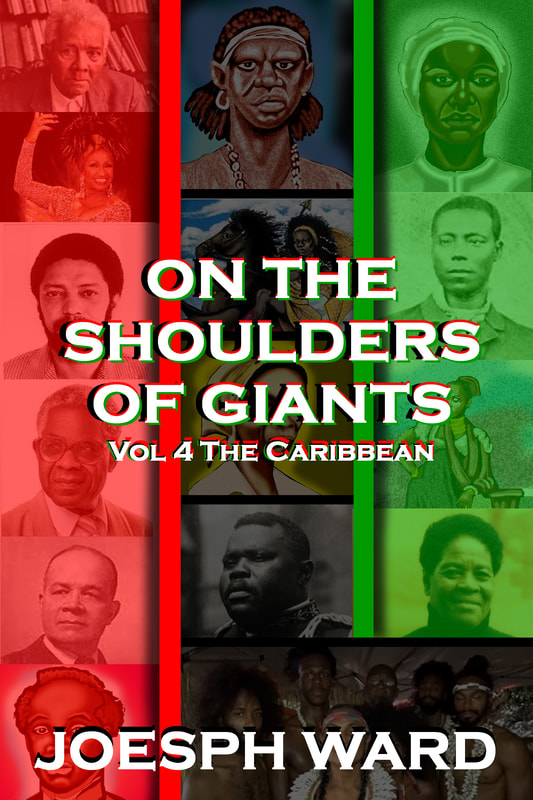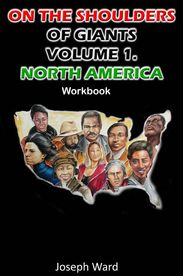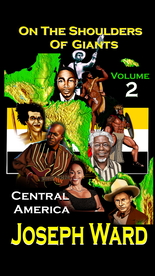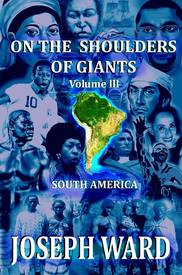|
On March 14, 1914, Abdias do Nascimento was born to parents Josina and Bem-Bem Nascimento in Franca, Sao Paulo, Brazil. As a child Nascimento experienced racism on several occasions from Italians and Brazilians who did not identify with Afro-Brazilians or lower class Brazilians. He would briefly join the Brazilian military in 1930 but was discharged for conduct undesired by the military. He began his journey as an activist joining Brazil’s first political party, the Frente Negra Brasileira. The party existed from 1931 to 1937 but was disbanded due to the dictatorial Estado Novo or the Second Republic, led by then president Getúlio Vargas. The Second Republic was an authoritarian regime suppressing any ideologies that challenged their control. Nascimento would go on to attend the Federal University of Rio de Janeiro and earned his bachelor’s degree in economics. He furthered his studies by attending and graduating from the Higher Institute of Brazilian Studies in 1957, and the Oceanography Institute in 1961. Nascimento and along with a collective of poets called the “Holy Brotherhood of the Orchid” took a trip to Buenos Aires, Argentina, there Nascimento was privileged to witness Argentinian theater being performed by the Teatro del Pueblo, who incorporated their history and culture within their performances. Inspired by the performances, Nascimento went on to create the Teatro Experimental do Negro, or the Black Experimental Theater, in 1944. Borrowing from the Teatro del Pueblo, Nascimento incorporated African culture, history and education into his performances. Further into his career he starred in a popular play titled Orpheus Of The Conception that eventually became the movie Black Orpheus. The Teatro Experimental do Negro also published a newspaper titled Quilombo after the communities created by the Africans who escaped slavery. Nascimanto’s activist spirit grew stronger and more creative as he found ways to incorporate his messages into the Teatros performances. Democracy was Nascimento’s battle cry as he and the Teatro Experimental do Negro stood up for Afro-Brazilians against racism and unequal treatment. Nascimento became the toughest critic of the Brazilian government and military for their futile attempts at creating a true democracy which included Afro-Brazilians. In 1968, Nascimento was exiled by the Brazilian military and forced to plant his roots within the Pan-African movement. Even in exile Nascimento did not relent on his criticism of Brazil’s government and military. He would become the vice president and coordinator of the Third Congress of Black Culture in the Americas. He also became a university professor during his exile, he would teach at the University at Buffalo, The State University of New York where he established the chair in African Cultures in the New World, and the Puerto Rican studies programs. He was also a professor at the Yale School of Drama, the University of Ife in Nigeria, and he was also a Professor Emeritus at SUNY-Buffalo. In the early 1980’s Nascimento would return to Brazil a very popular man whose activism was undaunted by the exile. He became an opponent of the appropriation of African culture, poor education and interracial marriages. As a member of the Democratic Labor Party he was elected to the federal Chamber of Deputies in 1983, he served on the senate from 1994 until 1999, and in 2004 he was nominated for a Nobel Peace Prize. In 2011, Nascimento died at the age of 97 leaving a legacy that other activist who followed him could learn from. He used his art to promote African history and culture, his activism was used to protect Afro-Brazilians and earn human rights, he published books such as Thoth and Afrodiaspora, wrote the play Black Mystery, published a book of poetry titled Asés of Blood and Hope: Orikis, and took a stand against the military and the government. As a man who was proud of his African origins, Nascimento understood the importance of promoting his African roots to the next generations. Mr. Abdias do Nascimento, we proudly stand on your shoulders. J.A. Ward References:
https://en.wikipedia.org/wiki/Abdias_do_Nascimento https://www.britannica.com/biography/Abdias-do-Nascimento http://www.verinhaottoni.com/abdiasdonascimento/texts/bio.html
0 Comments
On July 1, 1936, Wallace Amos, Jr. was born in Tallahassee, FL where he would live until the age of twelve. After his parents divorced he moved to Manhattan, New York to live with his aunt Della. While living with his aunt Amos found a love for cookies and baking. His aunt was the first to introduce him to baking chocolate chip cookies, which would change his life forever. His love for baking would lead him to enrolling into the Food Trades Vocational High School. At the high school he would take his aunts cookie recipe and improve on it ultimately creating his “Famous Amos” cookie recipe. Before Amos could complete high school he dropped out and joined the United States Air Force. While in the Air Force he gained his high school equivalency diploma before earning an honorable discharge. After the Air Force Amos had to earn a living, so he began working in the stock room at Saks Fifth Avenue. He was constantly over worked and under paid until he decided to quit Saks Fifth Avenue and try his hand in the entertainment industry. His first taste of the industry was with the William Morris Talent Agency. Similar to his start at Saks Fifth Avenue he had to work his way up. Amos started working in the mail room but that would only last a year. He became the first black talent agent at William Morris. His promotion would turn out to be a great move for the agency and “Famous” Amos. Mr. He would go on to book such acts as The Supremes, Simon & Garfunkel and Marvin Gaye. Taking all he learned from the William Morris Talent Agency Amos started his own theatrical management agency. His next step was to pack up and move to Los Angles, California. There he started baking again as a way to relax him from his days. His leisure cookie baking turned into an idea for a gourmet cookie stand. Amos was able to borrow $25,000 and built the first freestanding store on Sunset Boulevard, in Hollywood, California. Famous Amos cookies were born. Amos used his knowledge of show business to create a unique and successful marketing plan for his cookies. In 1985 Amos would lose control of the Famous Amos Cookie brand, but would later bounce back with his Uncle Wally’s Muffin Company. Amos would find a new focus in life after show business and baking, he focused his attention on battling illiteracy. He served as the national spokesperson for Literacy Volunteers of America from 1979 to 2002. He also served on the boards of the National Center for Family Literacy, Read to Me International, and Communities in Schools. In 2005 Amos and his wife co-founded the Chip & Cookie Read Aloud Foundation. Amos has also received the President’s Award for Entrepreneurial Excellence, the Horatio Alger Award, and the National Literacy Honors Award. Wally Amos is an author of eight books, a motivational speaker and a true role model. His latest project is baking cookies as the “Cookie Kahuna” in Oahu, in Kailua Town, Hawaii. “Famous” Amos has touched the hearts, stomachs, and lives of many people worldwide. He used his fame to uplift others and help future generations thrive. Mr. Wallace “Wally” Amos, we stand on your shoulders. J. A. Ward On November 17, 1904, William Henry Hastie Jr. was born to parents William Henry Hastie Sr. and Roberta Hastie, in Knoxville, Tennessee. In 1916, the Hastie family moved from Knoxville, Tennessee to Washington D.C. where Hastie would attend Paul Lawrence Dunbar High School and graduate as the valedictorian of his 1921 senior class. After graduation Hastie would move to Amherst, Massachusetts where he would attend Amherst College, he graduated magna cum laude and Phi Beta Kappa, in 1925. For two years he would become a teacher in Brodertown, New Jersey, he then attended Harvard Law School where he would earn his Bachelor of law (LL.B), his Doctor of Judicial Science (S.J.D.) in 1930, and he became a member of the Harvard Law Review. Also in 1930, Hastie would pass the bar exam for Washington D.C. before beginning his work as a solicitor for the Department of Interior until 1937; he was an advisor for the Department of Interior on racial issues. Hastie would create a partnership with Charles Hamilton Houston who ran his own law firm called, The Law Firm of Charles Hamilton Houston, where Houston and his father William Houston led the firm before the partnership with Hastie, creating the Law Firm of Houston, Houston and Hastie. William Houston was the dean of the Howard Law School and soon became a professor and teaching the legendary lawyer Thurgood Marshall. “Don’t buy where you can’t work,” was the motto of the New Negro Alliance an organization in which Hastie was a founding member of. The New Negro Alliance was an organization based originally in Washington D.C. which used protest and other forms of public demonstration to promote civil rights. One of Hastie’s most popular cases was the New Negro Alliance v. The Sanitary Grocery Co.. Blacks were issued an injunction by a local court for picketing the grocery store because they did not hire blacks. Hastie got off to a slow start in overturning the injunction, he lost the case in an initial trial, as well as in an appeals court, but the case was finally overturned in a U.S. Supreme Court. Hastie’s persistence led to a landmark victory which gave blacks and other groups of people the right to peaceful labor protesting without the fear of an injunction; this particular decision was named the Norris-LaGuardia Act. The success of the case made Hastie a popular figure in the civil rights movement, it led to Hastie becoming an advisor on racial matters for Franklin D. Roosevelt in 1933. As an advisor Hastie drafted legislation which affected policies in the U.S. Virgin Islands. The legislation changed policies which allowed the residents of the Virgin Islands to vote without facing discrimination. Following the legislation Hastie was appointed as a District Judge in the U.S. Virgin Islands by President Roosevelt, the appointment made Hastie the first black Federal Judge in the U.S.; Hastie didn’t complete his four year term because he became the dean of Howard Law School in 1939. Hastie became a law professor while serving as the dean of the Howard Law School, and even had the pleasure of becoming a professor to Thurgood Marshall. Later in Hastie’s and Marshall’s law career they would work together as co-lawyers in the Smith v. Allwright case that ruled against poll taxes being levied against black voters. In 1940, Hastie would work with the Secretary of War Henry Stimson to fight for the equal treatment of black soldiers in the armed forces. On January 15, 1943 Hastie gave up his position in protest of the continued unequal treatment of black soldiers. Later in 1943, he would receive the NAACP’s Spingarn Medal for his work in the fight for equal rights for black Americans. In 1946, Hastie was appointed the Territorial Governor of the U.S. Virgin Islands by President Harry S. Truman; the appointment made Hastie the first black governor in the U.S. Virgin Islands. Hastie was also appointed to the U.S. Court of Appeals for the Third Circuit in 1949 by President Truman, this particular appointment made Hastie the first black to serve as an appellate judge, a position he served in for twenty-two years. In 1950, he was confirmed and commissioned by the United States as an appellate judge, but was never appointed to the Supreme Court because he was a black man. In 1968, Hastie became the Chief Judge of the Third Circuit Court. Hastie died in 1976, but not before breaking barriers, as well as fighting for the rights of blacks in America. He used his passion for his people and the prominence of his legal positions to help make significant changes in the legal system for blacks in the U.S. Judge William Henry Hastie, we proudly stand on your shoulders. J.A. Ward |
Details
Categories
All
Click Here to join our mailing list
|
Contact Us: |
Connect With Us |
Site powered by PIT Web Design

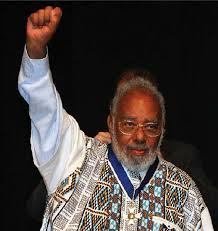
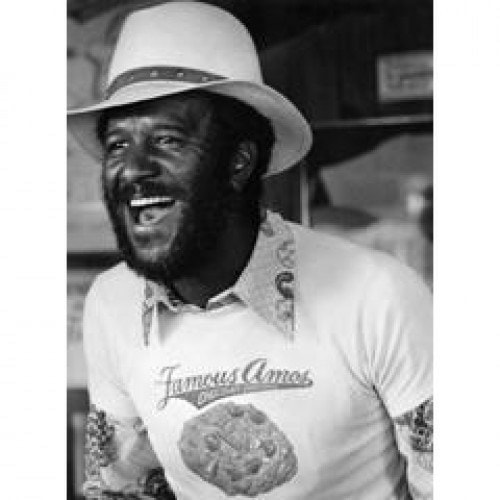
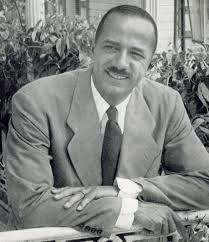
 RSS Feed
RSS Feed
